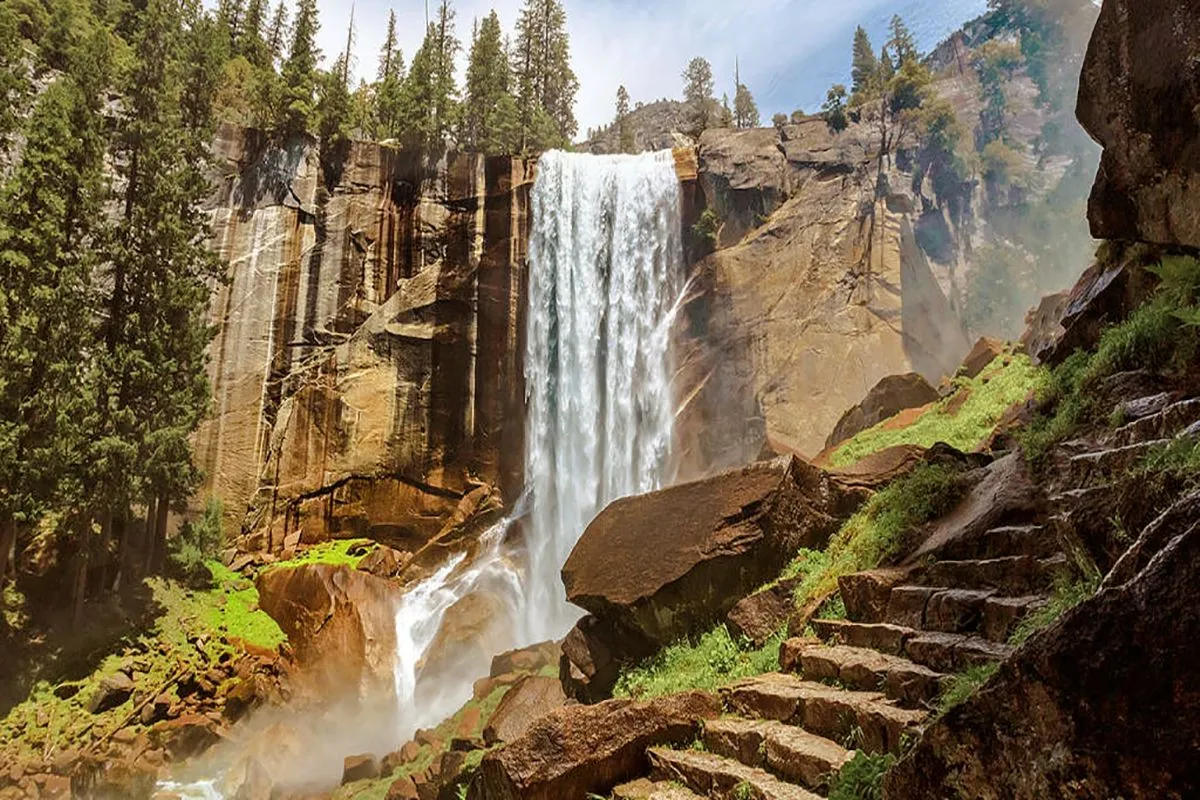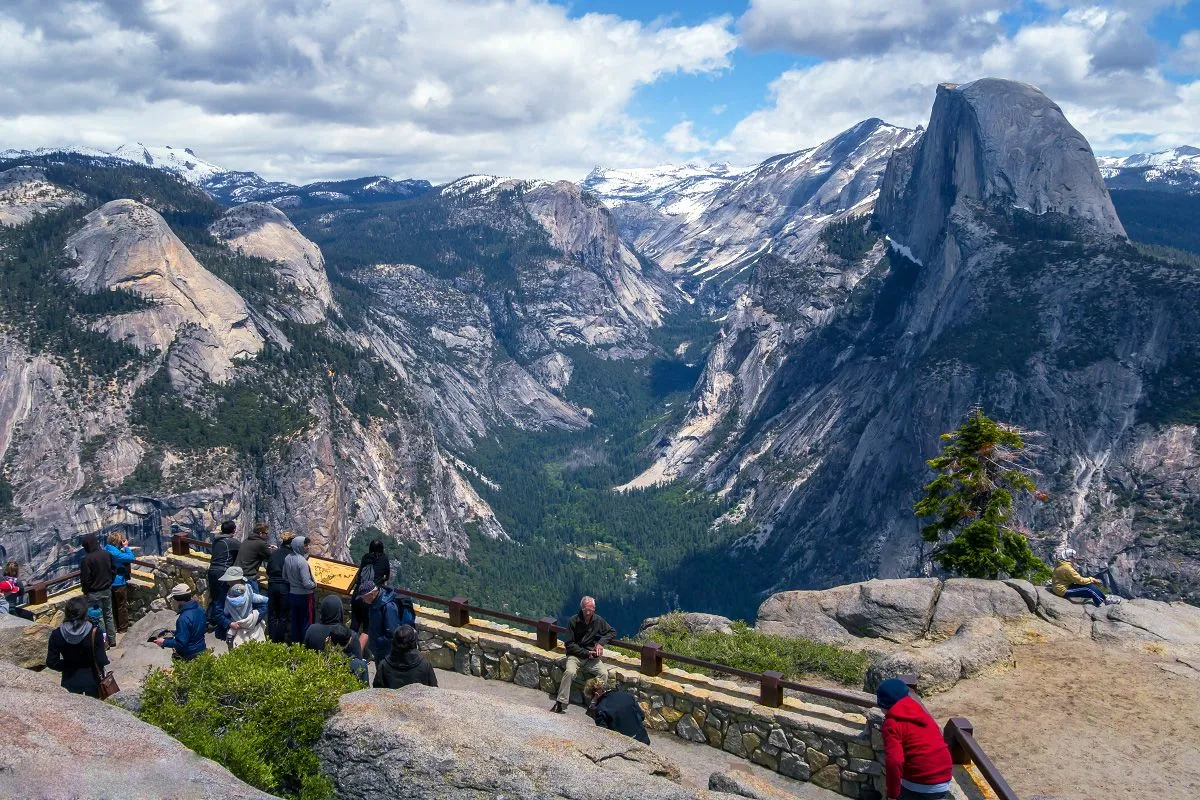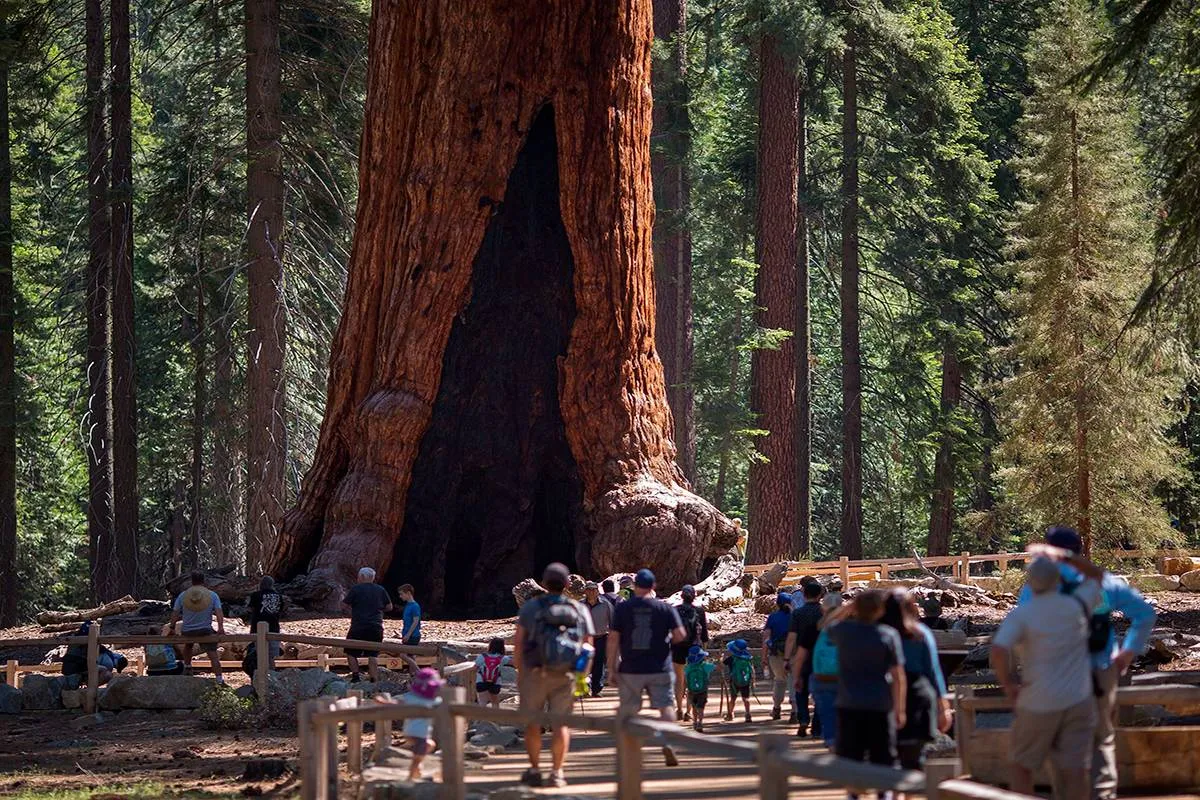Yosemite National Park, a majestic icon of California, is not only a scenic tourist destination but also a paradise for trekking enthusiasts. With diverse trails ranging from easy to challenging, Yosemite promises an unforgettable experience for all levels. This article will be the most detailed trekking guide in Yosemite National Park, helping you fully explore the pristine and magnificent beauty of this place.
Yosemite welcomes visitors with a perfect combination of majestic mountains, magnificent waterfalls, and vast primeval forests. However, to truly immerse yourself in nature and discover the hidden beautiful corners of Yosemite, there’s nothing better than trekking. Let’s prepare our gear and start the journey to conquer the most famous trekking routes in this national park.
Why Yosemite is an Ideal Trekking Destination?
Yosemite boasts a rich trail system, catering to all needs and levels of hikers. Here are the reasons why Yosemite is an ideal trekking destination:
- Diverse Terrain: From flat trails along the river to challenging rocky slopes, Yosemite has all kinds of terrain for you to choose from.
- Spectacular Scenery: Trekking in Yosemite means you will witness natural masterpieces such as the majestic Yosemite Falls, the towering El Capitan cliff, and the iconic Half Dome.
- Exploration Opportunities: Trekking allows you to access lesser-known areas of the park, discover pristine lakes, ancient forests, and rare flora and fauna.
- Challenging Experiences: For those who love conquering, Yosemite has challenging trekking routes that require good physical fitness and professional hiking skills.
Most Popular Trekking Routes in Yosemite
Here are some of the most popular trekking routes in Yosemite, categorized by difficulty level for your easy selection:
Easy Trails (Suitable for Beginners)
1. Lower Yosemite Fall Trail
- Length: 1.6 km (round trip)
- Elevation Gain: Negligible
- Time: 30 minutes – 1 hour
- Highlights: Easy access, stunning views of Yosemite Falls. Paved trail suitable for families and people with disabilities.
2. Mirror Lake Trail
- Length: 3.2 – 6.4 km (round trip, optional to go around the lake)
- Elevation Gain: 30 – 120 meters
- Time: 1 – 3 hours
- Highlights: Lake reflecting the image of Half Dome, peaceful scenery, ideal for picnics.
3. Bridalveil Fall Trail
- Length: 0.8 km (round trip)
- Elevation Gain: Negligible
- Time: 20 – 30 minutes
- Highlights: Easy access, graceful Bridalveil Fall, romantic scenery.

Moderate Trails (Good Fitness Required)
1. Mist Trail to Vernal Fall Footbridge
- Length: 4.8 km (round trip)
- Elevation Gain: 120 meters
- Time: 2 – 3 hours
- Highlights: Stunning views of Vernal Fall, experience walking near the waterfall (you may get wet).
2. Four Mile Trail to Glacier Point
- Length: 7.7 km (one way)
- Elevation Gain: 975 meters
- Time: 3 – 5 hours (one way)
- Highlights: Spectacular views of Yosemite Valley, challenging continuous uphill climb.
3. Sentinel Dome Trail
- Length: 3.5 km (round trip)
- Elevation Gain: 120 meters
- Time: 1.5 – 2.5 hours
- Highlights: 360-degree view of Yosemite, easy access from Glacier Point Road.

Difficult Trails (For Experienced Hikers Only)
1. Half Dome Hike (via Cables)
- Length: 22.5 km (round trip)
- Elevation Gain: 1460 meters
- Time: 10 – 12 hours
- Highlights: Conquer the iconic Half Dome, challenging cable climb experience, panoramic view of Yosemite. Permit required.
2. Clouds Rest Trail
- Length: 22.5 km (round trip)
- Elevation Gain: 880 meters
- Time: 8 – 10 hours
- Highlights: Panoramic view of Yosemite from a high altitude, less crowded than Half Dome, pristine scenery.
3. Yosemite Falls Trail
- Length: 11.6 km (round trip)
- Elevation Gain: 820 meters
- Time: 6 – 8 hours
- Highlights: Challenging continuous uphill climb, reaching the top of Yosemite Falls, beautiful valley views.
What to Prepare for Trekking in Yosemite?
To have a safe and successful trekking trip in Yosemite, you need to prepare thoroughly in terms of fitness, equipment, and knowledge. Here is a list of essential items:
- Trekking shoes: Choose shoes with good grip, comfortable, and broken-in.
- Backpack: Choose a backpack of suitable size for the trip, with enough compartments to store belongings.
- Clothing: Wear comfortable, sweat-wicking, sun-protective, and windproof clothing. Bring a warm jacket, hat, and gloves (especially if going in cold weather).
- Water: Bring enough water for the whole day. You can use a water filter bottle or water purification tablets to get water from streams.
- Food: Bring energy-rich snacks such as granola bars, dried fruit, and nuts.
- Sunscreen, hat, sunglasses: Protect your skin and eyes from the sun.
- Map, compass/GPS: Help you navigate and avoid getting lost.
- First aid kit: Band-aids, antiseptic, pain relievers, allergy medication.
- Flashlight/headlamp: Necessary if you are trekking in the early morning or late afternoon.
- Multi-tool knife: Useful in many situations.
- Permit (if required): Some trekking routes like Half Dome require a permit.
- Trekking poles: Help reduce pressure on your knees and increase stability when climbing slopes.
Safety Tips When Trekking in Yosemite
Safety is always the top priority when trekking in Yosemite. Here are some important safety tips:
- Check the weather forecast: Avoid trekking when there are warnings of bad weather.
- Go with a partner: Do not trek alone.
- Inform others: Let relatives or friends know about your plan, including the route, departure time, and expected return time.
- Stay on the trail: Do not take shortcuts or stray into unmarked areas.
- Be careful with wildlife: Maintain a safe distance from wildlife, do not feed them, and do not disturb them.
- Drink enough water: Drink water regularly, even if you don’t feel thirsty.
- Rest regularly: Stop to rest to avoid exhaustion.
- Recognize the signs of heatstroke and hypothermia: If you feel dizzy, nauseous, or have other symptoms, stop to rest and seek help.
- Pack out trash: Carry all your trash with you and dispose of it in designated trash cans.
- Respect nature: Do not pick flowers, break branches, or damage the natural environment.
Best Season to Trek Yosemite?
The best time to trek in Yosemite is in spring (May – June) and autumn (September – October).
- Spring: Cool weather, magnificent waterfalls after winter snowmelt, lush greenery. However, some areas may still be icy or flooded.
- Summer: Hot, dry weather, suitable for swimming and sunbathing. However, waterfalls may be less full and there are more tourists.
- Autumn: Cool, pleasant weather, leaves turn vibrant colors, fewer tourists than in summer.
- Winter: Heavy snowfall, many areas are closed. Only suitable for experienced snow hikers.

Conclusion
Trekking in Yosemite National Park is a wonderful experience, giving you the opportunity to explore the majestic and pristine beauty of nature. Hopefully, with this detailed trekking guide in Yosemite National Park, you will have a safe, memorable, and joyful trip. Prepare thoroughly, follow safety rules, and enjoy every moment on the beautiful trekking trails of Yosemite!